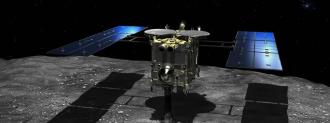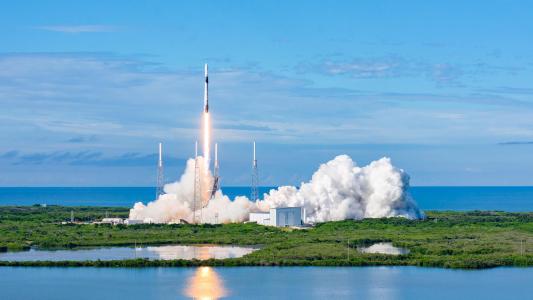A Japanese spacecraft just dropped some knowledge on Australia — from 136,700 miles up. The probe released a capsule containing rock samples it blasted off of the asteroid Ryugu last year.
The capsule landed safely in the Australian outback on December 6, and the asteroid samples are now headed to Japan where they could reveal new insights into the birth of our solar system — and the origin of life itself.
Collecting the Asteroid Samples
The probe, called Hayabusa2, started its 190-million-mile journey to Ryugu in 2014, finally reaching the rocky asteroid in 2018.
The following year, it collected two sets of asteroid samples. For the first, it scooped up dust from the asteroid’s surface; for the second, it blasted a tiny crater in the space rock to collect underground samples — something no spacecraft had done before.
It took about a year for Hayabusa2 to get back to Earth to drop off the asteroid samples.
As the precious cargo neared Earth’s surface, a parachute opened to slow its descent and a beacon began transmitting its location. A recovery team later swooped in to retrieve the capsule, which was found in “perfect shape,” Hayabusa2 project manager Yuichi Tsuda told reporters.
The asteroid samples will soon be on the move again, on a much shorter trip to a Japan Aerospace Exploration Agency (JAXA) facility near Tokyo. That’s where the really exciting part begins: the data analysis!
Learning From Ryugu
OK, so studying what’s expected to be just 0.1 grams of soil and dust might not sound more exciting than blasting a hole in an asteroid, but hear us out.
Asteroids are some of the oldest known objects in our solar system, and they’re made from the materials left over after the planets formed 4.6 billion years ago.
While the planets have changed significantly since then, asteroids are largely the same as when they first formed. The soil collected from beneath Ryugu’s surface hasn’t even been exposed to solar radiation, meaning it could offer scientists a direct, unprecedented look at our solar system’s formation.
Hayabusa2 is the first spacecraft to collect underground samples from an asteroid.
“Having samples from an asteroid like Ryugu will be really exciting for our field,” Sara Russell, leader of the planetary materials group at London’s Natural History Museum, told BBC News. “We think Ryugu is made up of super-ancient rocks that will tell us how the solar system formed.”
Any organic materials found within the asteroid samples will be of particular interest, as they could give scientists a better understanding of how those materials are spread throughout the solar system — and whether the building blocks for life may have reached Earth via asteroid impacts.
“(I)t could be that these organic materials were the source of life on Earth,” Hayabusa2 mission manager Makoto Yoshikawa told reporters.
What’s Next for Hayabusa2?
JAXA plans to study the asteroid samples for six months, and then distribute some of them to NASA and other groups for additional research.
As for Hayabusa2, after releasing the capsule, the probe immediately launched out on a new mission, studying space dust, exoplanets, and a mid-sized asteroid called 2001 CC21.
The craft’s ultimate destination, though, is a small, rapidly spinning asteroid known as 1998 KY26 — and while Hayabusa2’s visit to Ryugu could help us learn about the past, this trip could prepare us for the future.
A large asteroid impact could have devastating consequences for life on Earth, and according to Yoshikawa, 1998 KY26 is the type of asteroid most likely to strike our planet’s surface.
By sending Hayabusa2 to the asteroid, JAXA aims to collect information about these potentially dangerous space rocks so that we could be better prepared to cope with one if it does appear headed our way.
We just need to hope that that’s not information we need in the immediate future — Hayabusa2 won’t reach the tiny space rock until 2031.
We’d love to hear from you! If you have a comment about this article or if you have a tip for a future Freethink story, please email us at [email protected].






